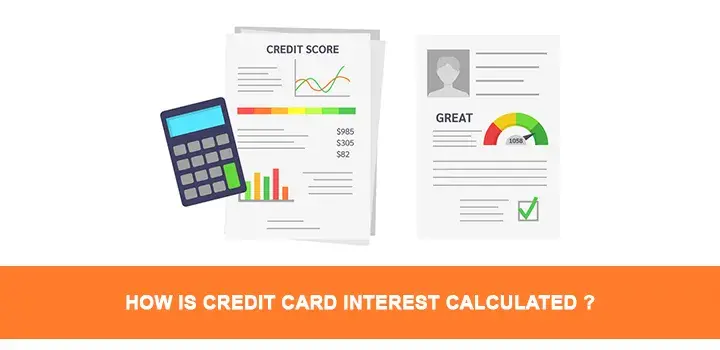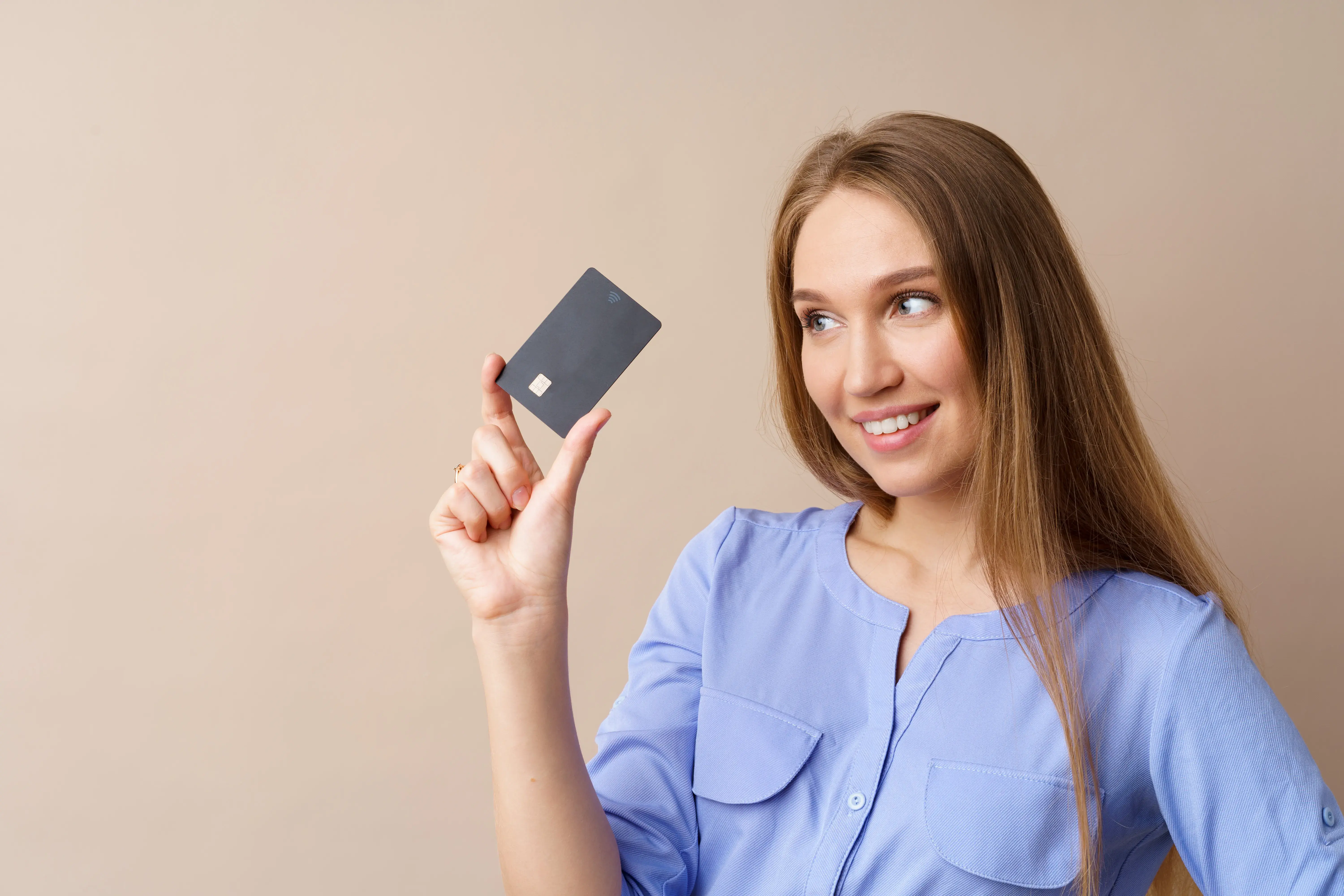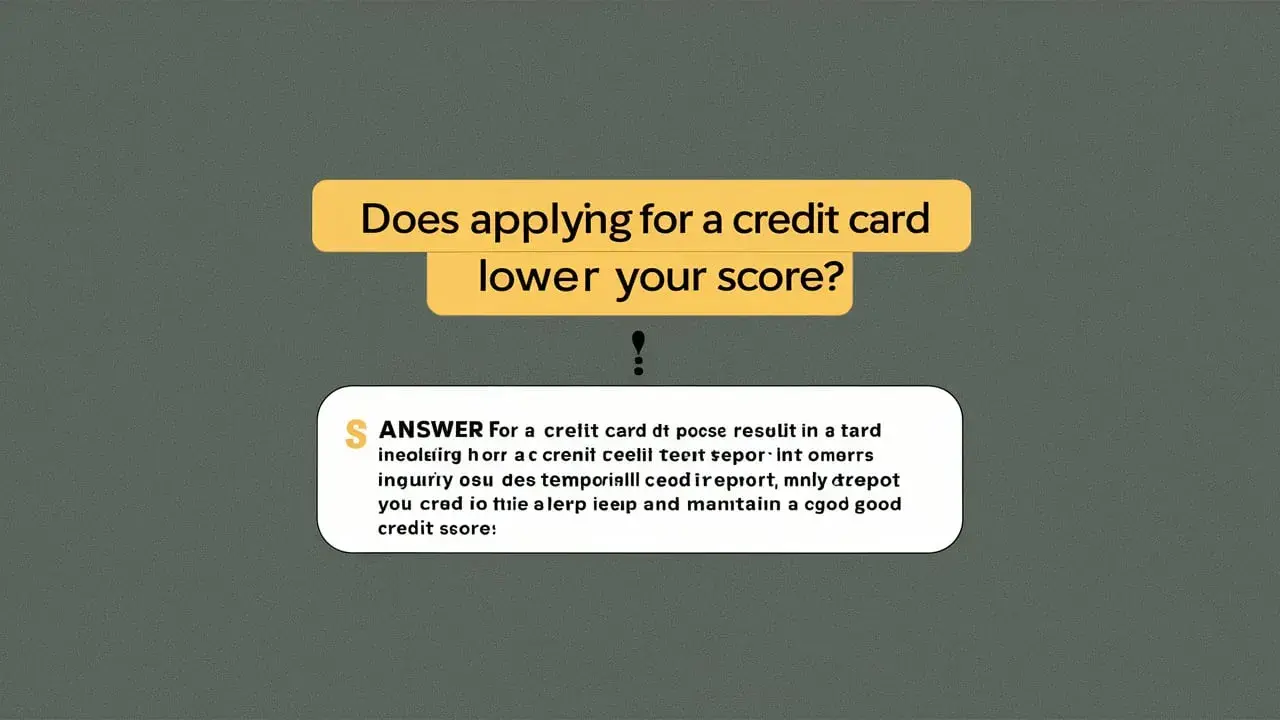-
Posted on: 21 Dec 2022

-
Understanding how credit card interest is calculated is crucial for managing your finances effectively. This guide breaks down the complex formulas and factors involved, empowering you to avoid unnecessary charges and make informed borrowing decisions in 2025.
Understanding the Annual Percentage Rate (APR)
The cornerstone of credit card interest calculation is the Annual Percentage Rate, or APR. This figure represents the yearly cost of borrowing money on your credit card, expressed as a percentage. However, it's crucial to understand that credit card companies don't typically charge interest annually. Instead, they break down the APR into smaller, more manageable periods, usually daily. This means that even if you have a 20% APR, you're not paying 20% of your balance at the end of the year. You're paying a fraction of that percentage each day on your outstanding balance.
In 2025, the average APR for new credit cards hovers around 20-25%, though this can vary significantly based on your creditworthiness, the type of card, and market conditions. For consumers with excellent credit, APRs might be lower, while those with less-than-perfect credit will likely face higher rates. It's essential to know your specific APR, as it directly dictates how much interest you'll accrue. You can find your APR on your credit card statement or by logging into your online account with the card issuer.
When you see an APR, it's usually presented as a range. For example, a card might have an APR of 18.99% to 28.99%. The specific rate you are assigned depends on your credit score and other factors the lender considers during the application process. A higher APR means you will pay more in interest charges over time, especially if you carry a balance. Understanding this initial rate is the first step in demystifying how credit card interest is calculated.
Calculating the Daily Periodic Rate (DPR)
To understand how interest accumulates daily, you need to calculate the Daily Periodic Rate (DPR). This is derived directly from your Annual Percentage Rate (APR). The calculation is straightforward:
Daily Periodic Rate (DPR) = Annual Percentage Rate (APR) / 365
Let's illustrate with an example. If your credit card has an APR of 21.99%, the calculation would be:
DPR = 21.99% / 365
To perform this calculation, you need to convert the APR percentage to a decimal by dividing it by 100:
DPR = 0.2199 / 365
DPR ≈ 0.00060246575
This means that for every dollar you owe on your credit card each day, you are being charged approximately $0.00060246575 in interest. While this number seems small, it compounds over time, especially if you carry a balance for an extended period. For instance, if you owe $1,000 with a 21.99% APR, your daily interest charge would be:
Daily Interest = $1,000 * 0.00060246575 ≈ $0.60
This means you'd accrue about 60 cents in interest each day on that $1,000 balance. It's vital to remember that this DPR is applied to your outstanding balance every single day. This daily accrual is a key component of how credit card interest is calculated and why carrying a balance can become expensive quickly.
Some credit card agreements might use 360 days instead of 365 for calculating the DPR. While less common, it's worth checking your cardholder agreement for specifics. Using 360 days would result in a slightly higher daily interest charge because the annual rate is divided by a smaller number. In 2025, the vast majority of issuers still use 365 days.
Determining Your Average Daily Balance
The interest you pay is not based on a single day's balance but on your Average Daily Balance (ADB). This is a crucial concept because your balance often fluctuates throughout the billing cycle due to purchases, payments, and credits. The ADB provides a more accurate representation of the amount you owed over the entire billing period.
Here's how to calculate the Average Daily Balance:
- Track Your Balance Daily: For each day in the billing cycle, record the closing balance of your credit card account.
- Sum the Daily Balances: Add up all the daily closing balances for the entire billing cycle.
- Divide by the Number of Days: Divide the total sum of daily balances by the number of days in that billing cycle (typically 30 or 31 days, or 28/29 in February).
Average Daily Balance (ADB) = Sum of Daily Closing Balances / Number of Days in Billing Cycle
Let's consider a simplified example for a 30-day billing cycle:
- Days 1-10: Balance = $500
- Days 11-20: Balance = $800 (after a purchase)
- Days 21-30: Balance = $600 (after a payment)
Sum of Daily Balances:
- (10 days * $500) + (10 days * $800) + (10 days * $600) = $5,000 + $8,000 + $6,000 = $19,000
Average Daily Balance:
- $19,000 / 30 days = $633.33
This $633.33 is the ADB that will be used to calculate your interest charges for that billing cycle. If your credit card has an APR of 21.99% (DPR of approximately 0.00060246575), the interest for the month would be calculated using this ADB.
It's important to note that different methods can be used by card issuers to calculate the ADB. Some might exclude days where the balance was zero, while others might use a different averaging method. Always refer to your cardholder agreement for the precise calculation method used by your issuer. In 2025, most major credit card companies employ the average of the daily balances method as described above.
The Formula: Putting It All Together
Now that we've covered the APR, the Daily Periodic Rate (DPR), and the Average Daily Balance (ADB), we can combine them to understand the full formula for calculating your monthly credit card interest charges.
The fundamental formula is:
Monthly Interest Charge = Average Daily Balance (ADB) * Daily Periodic Rate (DPR) * Number of Days in Billing Cycle
Let's use the example from the previous section:
- Average Daily Balance (ADB) = $633.33
- APR = 21.99%
- Daily Periodic Rate (DPR) = 0.2199 / 365 ≈ 0.00060246575
- Number of Days in Billing Cycle = 30
Monthly Interest Charge = $633.33 * 0.00060246575 * 30
Monthly Interest Charge ≈ $11.42
So, in this scenario, you would be charged approximately $11.42 in interest for that billing cycle. This amount would then be added to your principal balance, and if you don't pay it off, it will be included in the calculation of your next month's interest, demonstrating the power of compounding.
It's important to remember that this is a simplified calculation. Some card issuers may round figures differently, or their calculation might be slightly more complex. However, this formula provides a very accurate representation of how credit card interest is calculated. Understanding this formula is key to managing your debt and avoiding excessive interest payments. For instance, if you only make the minimum payment, a significant portion of that payment often goes towards interest, with only a small amount reducing the principal balance.
For a deeper dive into how different payment strategies affect your interest, you might find our article on Strategies to Minimize Credit Card Interest helpful.
Different Types of APRs and Their Impact
Credit card companies often offer various types of APRs, and understanding them is crucial as they significantly impact how interest is calculated and when it applies. In 2025, the most common APRs include:
- Purchase APR: This is the most standard APR and applies to new purchases you make with your card. It's the rate used in the calculations we've discussed.
- Balance Transfer APR: This APR applies to balances you transfer from other credit cards to your current card. Often, balance transfers come with an introductory low APR (sometimes 0%) for a specific period, after which the standard purchase APR or a higher balance transfer APR kicks in.
- Cash Advance APR: This APR applies to cash withdrawals made using your credit card (e.g., at an ATM). Cash advance APRs are typically much higher than purchase APRs, and interest usually starts accruing immediately, with no grace period.
- Penalty APR: This is a punitive rate that can be triggered if you miss a payment, make a late payment, or exceed your credit limit. Penalty APRs are often very high and can remain in effect for an extended period, sometimes indefinitely, until the card issuer decides to lower it.
- Introductory APR: Many cards offer a low (often 0%) introductory APR on purchases and/or balance transfers for a limited time (e.g., 6, 12, or 18 months). After the introductory period ends, the APR reverts to the standard purchase APR. This is a powerful tool for saving money on interest if managed correctly.
Comparison of APR Types (Illustrative 2025 Data):
APR Type Typical Rate Range When it Applies Grace Period Purchase APR 18.99% - 28.99% New purchases Yes (if balance paid in full) Balance Transfer APR 0% (intro) then 20% - 30% Transferred balances Varies (often none on transferred amount) Cash Advance APR 25% - 30% Cash withdrawals No (starts immediately) Penalty APR 29.99% - 34.99% (or higher) Late payments, defaults No (or very limited) Introductory APR 0% - 5% New purchases/transfers (limited time) Yes (on qualifying transactions) The calculation of interest using these different APRs follows the same principles (ADB * DPR * Days), but the specific APR used will change depending on the transaction type and your account status. For example, if you have a balance transfer with a 0% intro APR and make new purchases, the interest calculation for those purchases will use the Purchase APR, while the balance transfer amount accrues no interest during the intro period.
Understanding these nuances is critical. A cash advance, for instance, is incredibly expensive due to the high APR and lack of a grace period. Similarly, triggering a penalty APR can dramatically increase your debt burden. Always check your cardholder agreement for the specific APRs applicable to your account and the terms under which they apply.
The Role of Grace Periods
A grace period is a vital feature of most credit cards that allows you to avoid paying interest on your purchases. It's essentially a window of time between the end of your billing cycle and the payment due date. If you pay your entire statement balance in full by the due date, you will not be charged any interest on the purchases made during that billing cycle.
How Grace Periods Work:
- Billing Cycle End: Your credit card company closes your billing cycle on a specific date each month.
- Statement Generation: A statement is generated, detailing all transactions, your total balance, and the minimum payment due.
- Payment Due Date: You have a set number of days (typically 21-25 days) after the statement date to make your payment. This is your grace period.
- Interest Avoidance: If you pay the *entire* statement balance by this due date, you won't be charged interest on any of the purchases that appeared on that statement.
When Grace Periods are Lost:
It's crucial to understand that the grace period is often forfeited if you carry a balance from one billing cycle to the next. This means if you don't pay your previous statement's balance in full, interest will start accruing on new purchases immediately from the date they are made, without a grace period. This is a common pitfall that leads to higher interest charges.
Furthermore, cash advances and balance transfers typically do not have a grace period. Interest begins to accrue on these transactions from the moment they are posted to your account, regardless of whether you pay your statement balance in full. This is why using credit cards for cash is generally discouraged.
Example:
- Your billing cycle ends on the 15th of each month.
- Your statement balance is $1,200.
- Your payment due date is the 10th of the following month.
- You have a grace period of approximately 25 days (from the 15th to the 10th).
If you pay the full $1,200 by the 10th of the next month, you will not be charged any interest on those purchases. However, if you only pay $100 (the minimum payment), you will carry over $1,100 to the next billing cycle. In this case, you lose the grace period. Any new purchases you make in the next cycle will start accruing interest immediately, and the remaining $1,100 will also start accruing interest.
In 2025, while grace periods remain a standard feature for purchases, issuers are increasingly strict about the conditions for maintaining them. Always aim to pay your statement balance in full to leverage this valuable benefit and minimize your interest costs.
Key Factors Influencing Your Interest Charges
Beyond the core mechanics of APR, DPR, and ADB, several other factors can significantly influence the amount of interest you pay on your credit card. Understanding these can help you manage your account more effectively and potentially reduce your interest burden.
1. Credit Limit: While not directly part of the interest calculation formula, your credit limit can indirectly affect your interest charges. A higher credit limit might tempt you to spend more, leading to a higher average daily balance and thus more interest. Conversely, a lower credit limit might force you to be more disciplined with your spending.
2. Payment Amount: This is arguably the most critical factor you control. Making only the minimum payment means a large portion of your payment goes towards interest, and the principal balance reduces very slowly. Paying more than the minimum, or paying the full statement balance, dramatically reduces the amount of interest you'll pay over time. For instance, paying an extra $100 each month can save you hundreds or even thousands in interest over the life of a debt.
3. Payment Timing: As discussed with grace periods, when you make your payment matters. Paying well before the due date ensures your payment is processed and applied promptly, potentially preventing a late fee and ensuring you maintain your grace period if you're paying the balance in full. Paying exactly on the due date can be risky due to processing delays.
4. Fees: While not interest, fees add to the overall cost of your credit card. Late fees, over-limit fees, annual fees, and balance transfer fees all increase the amount you owe. These fees can sometimes be higher than the interest charged in a given month, so avoiding them is crucial. Our section on Understanding Fees provides more detail.
5. Promotional Offers: As mentioned, introductory 0% APR offers on purchases or balance transfers can significantly reduce interest charges for a limited time. However, it's essential to be aware of the APR that applies after the promotion ends and to have a plan to pay down the balance before the higher rate kicks in.
6. Credit Score Changes: Your credit score influences your APR. If your credit score improves, you might be eligible for a lower APR, either by requesting a rate reduction from your current issuer or by qualifying for a new card with better terms. Conversely, a declining credit score can lead to a higher APR, especially if a penalty APR is triggered.
7. Card Issuer Policies: Different credit card issuers have slightly different policies regarding how they calculate ADB, when they apply payments, and how they handle grace periods. Always refer to your specific cardholder agreement for the most accurate information. In 2025, issuers are generally more transparent about these policies, but the fine print is still important.
By actively managing these factors, consumers can significantly reduce the amount of interest they pay and improve their overall financial health. Making informed decisions about spending, payments, and utilizing promotional offers are key strategies.
Real-World Examples of Interest Calculation
To solidify your understanding of how credit card interest is calculated, let's walk through a few more detailed real-world scenarios. These examples highlight how different spending and payment habits affect the interest accrued.
Example 1: Consistent Balance Payoff
Sarah has a credit card with a 20% APR. Her billing cycle ends on the 25th of each month, and her payment is due on the 20th of the next month. She makes a $1,000 purchase on July 1st.
- July 1st: Purchase of $1,000. Balance = $1,000.
- July 1st - July 25th (25 days): Balance remains $1,000.
- July 25th: Statement generated with a balance of $1,000.
- August 20th: Payment due date.
If Sarah pays the full $1,000 by August 20th:
- She maintains her grace period.
- Interest Charge = $0.
This is the ideal scenario, demonstrating how to use credit cards without incurring interest.
Example 2: Carrying a Small Balance
John has a credit card with a 22% APR. His billing cycle ends on the 10th, and his payment is due on the 5th of the next month. He has a $500 balance from previous purchases.
- June 11th - July 10th (30 days): John's balance is $500.
- July 10th: Statement generated with a balance of $500.
- July 5th: Payment due date. John only pays $50.
Since John did not pay the full statement balance ($500) by the due date, he loses his grace period. The remaining $450 ($500 - $50) will carry over, and new purchases will accrue interest immediately.
Interest Calculation for the next cycle (assuming no new purchases for simplicity):
- Previous balance carried over: $450.
- APR = 22%
- DPR = 0.22 / 365 ≈ 0.0006027
- Number of days in the next billing cycle = 31 (July 11th - August 10th)
- Average Daily Balance = $450 (since no new activity)
- Interest Charge = $450 * 0.0006027 * 31 ≈ $8.44
John will be charged approximately $8.44 in interest for the next billing cycle. This $8.44 will be added to his balance, making it $458.44, and this new balance will be subject to interest in the following cycle.
Example 3: Using a Balance Transfer Card
Maria has $5,000 in credit card debt with a 25% APR. She gets a new card with a 0% introductory APR on balance transfers for 15 months. The card has a 3% balance transfer fee.
- Balance Transfer Fee: 3% of $5,000 = $150. This fee is added to her balance.
- New Balance: $5,000 + $150 = $5,150.
- APR during intro period: 0%.
For the next 15 months, Maria will pay no interest on the $5,150 balance. If she pays off the entire $5,150 within these 15 months, she will have saved a significant amount of interest compared to her previous card.
However, if she only makes minimum payments or makes new purchases, she needs to be aware of the APR after the 15-month period. If the APR after the intro period is 22%, and she still has a balance of $3,000, the interest calculation will then proceed using the standard formula with the 22% APR.
These examples illustrate how crucial payment habits and understanding the terms of your credit card are in determining how much interest you ultimately pay. In 2025, with interest rates potentially remaining elevated, these calculations are more important than ever.
Strategies to Minimize Credit Card Interest
Understanding how credit card interest is calculated is the first step; the next is implementing strategies to minimize these costs. In 2025, with the cost of borrowing remaining a significant concern for many, these strategies are more vital than ever. Here are effective ways to reduce or eliminate credit card interest:
1. Pay Your Statement Balance in Full, Every Month: This is the golden rule. By paying your entire statement balance by the due date, you leverage your card's grace period and pay zero interest on purchases. This is the most effective way to avoid interest charges.
2. Make More Than the Minimum Payment: If you can't pay the full balance, pay as much as you possibly can. Even an extra $50 or $100 can make a significant difference in reducing the principal balance faster and, consequently, the interest accrued over time. A higher payment means less of your money goes to interest and more goes to paying down the debt.
3. Understand and Utilize Introductory 0% APR Offers: Many credit cards offer 0% introductory APRs on purchases and/or balance transfers for a set period (e.g., 12-21 months). If you have a large purchase planned or existing high-interest debt, strategically using a balance transfer card can save you substantial money. Just ensure you have a plan to pay off the balance before the promotional period ends, as the regular APR can be quite high.
4. Negotiate Your APR: Don't hesitate to call your credit card issuer and ask for a lower APR, especially if you have a good payment history and a solid credit score. Issuers are often willing to negotiate to retain customers, particularly in competitive markets. Even a small reduction in your APR can lead to significant savings over time.
5. Consolidate High-Interest Debt: If you have multiple credit cards with high balances and high APRs, consider consolidating them. This could involve a balance transfer to a card with a 0% intro APR or a personal loan with a lower interest rate. This simplifies your payments and can reduce the overall interest paid.
6. Avoid Cash Advances and Balance Transfers (Unless Strategic): As we've discussed, cash advances come with high APRs and no grace period, making them extremely expensive. While balance transfers can be beneficial with 0% intro APRs, be mindful of the transfer fees and the APR that applies after the promotional period. Avoid them for everyday spending.
7. Set Up Automatic Payments: To avoid late fees and ensure you never miss a payment (which can trigger penalty APRs and loss of grace periods), set up automatic minimum payments. Ideally, set up automatic payments for the full statement balance if you are confident in your budgeting.
8. Budget and Track Your Spending: Knowing where your money is going is fundamental. Use budgeting apps or spreadsheets to track your credit card spending. This helps you stay within your means and avoid accumulating debt that will accrue interest.
9. Pay More Frequently: While not always feasible, making smaller payments more frequently throughout the month can help reduce your Average Daily Balance. For example, if you make a purchase, paying it off within a few days can prevent it from significantly impacting your ADB for the entire billing cycle.
Implementing these strategies requires discipline and financial awareness, but the rewards – saving money on interest and achieving financial freedom faster – are well worth the effort. For more on managing debt, explore resources on credit card debt management.
Beyond Interest: Understanding Other Credit Card Fees
While credit card interest is often the most significant cost associated with carrying a balance, other fees can also add up and increase the overall expense of using a credit card. Understanding these fees is crucial for a complete picture of your credit card costs. In 2025, these fees remain a common part of credit card agreements.
Here are some of the most common credit card fees:
- Annual Fee: Some credit cards, particularly premium rewards cards, charge an annual fee for the privilege of using the card. This fee can range from $25 to $500 or more. While it might seem like a disadvantage, the rewards and benefits offered by these cards can often outweigh the annual fee if you use them strategically.
- Late Payment Fee: If you fail to make at least the minimum payment by the due date, you will typically incur a late payment fee. These fees can be substantial, often ranging from $29 for a first offense to $40 or more for subsequent offenses within a six-month period. Late payments also negatively impact your credit score and can lead to the loss of your grace period and potentially trigger a penalty APR.
- Over-Limit Fee: If you spend more than your credit limit, your card issuer may charge an over-limit fee. Many issuers now require you to opt-in to allow transactions that exceed your credit limit, but if you have opted in, this fee can apply. It's generally advisable to avoid exceeding your credit limit altogether.
- Balance Transfer Fee: As mentioned earlier, when you transfer a balance from one card to another, the new card issuer usually charges a fee. This fee is typically a percentage of the amount transferred, commonly ranging from 3% to 5%. For example, a 3% fee on a $5,000 balance transfer would cost $150.
- Cash Advance Fee: Taking out cash using your credit card (e.g., at an ATM) usually incurs a cash advance fee. This fee is often a percentage of the amount withdrawn (e.g., 5%) or a flat fee, whichever is greater. These fees are typically higher than balance transfer fees.
- Foreign Transaction Fee: If you use your credit card for purchases made outside your home country, you might be charged a foreign transaction fee. This is usually a percentage of each transaction, typically ranging from 1% to 3%. Many travel-focused credit cards waive these fees.
- Returned Payment Fee: If your payment to the credit card company is returned due to insufficient funds (e.g., a bounced check or failed electronic payment), you may be charged a returned payment fee.
Fee Comparison Table (Illustrative 2025 Data):
Fee Type Typical Range When it Applies Impact Annual Fee $0 - $500+ Once per year Cost of card ownership; potentially offset by rewards. Late Payment Fee $29 - $40+ Missed payment due date Increases debt, harms credit score, may trigger penalty APR. Over-Limit Fee $25 - $40+ Exceeding credit limit (if allowed) Directly increases debt. Balance Transfer Fee 3% - 5% of amount transferred Transferring balances Adds to the total debt being transferred. Cash Advance Fee 5% of amount withdrawn (or flat fee) Withdrawing cash Adds to debt, high APR starts immediately. Foreign Transaction Fee 1% - 3% of transaction Purchases in foreign currency Increases cost of international spending. While interest is calculated based on your balance and APR, these fees are fixed charges or percentages applied directly to your account. They can significantly increase the total cost of credit card usage, especially if you are not paying your balance in full each month. Always review your cardholder agreement to understand all applicable fees and how to avoid them.
Credit Card Interest in 2025: What to Expect
As we look ahead to 2025, several factors will continue to shape how credit card interest is calculated and the rates consumers can expect. The landscape of credit card interest is dynamic, influenced by economic conditions, monetary policy, and issuer strategies.
1. Interest Rate Environment: The Federal Reserve's monetary policy plays a significant role in setting the benchmark interest rates. If the Fed maintains higher interest rates to combat inflation, credit card APRs are likely to remain elevated. Conversely, if rates begin to fall, we might see a gradual decrease in credit card interest rates, although this often lags behind changes in the federal funds rate. In 2025, many economists predict a stable to slightly declining interest rate environment, but volatility remains a possibility.
2. Continued Focus on Average Daily Balance: The core method of calculating interest based on the Average Daily Balance (ADB) is unlikely to change. This method is standard across the industry and provides a fair (from the issuer's perspective) way to account for fluctuating balances. Consumers should continue to focus on managing their ADB by paying down balances strategically.
3. Sophistication in APR Differentiation: Credit card issuers will likely continue to use sophisticated algorithms to assess risk and set APRs. This means that APRs will remain highly personalized, with individuals possessing strong credit profiles benefiting from lower rates, while those with weaker profiles will face higher costs. Expect continued emphasis on credit scores and financial history in determining APRs.
4. Rise of Digital Tools and Transparency: In 2025, expect more digital tools and enhanced transparency from credit card issuers. Mobile apps and online portals will likely offer more robust interest calculators, personalized insights into spending patterns, and clearer explanations of how interest is calculated. This increased transparency aims to empower consumers to make more informed decisions.
5. Competition for Cardholders: Despite potentially higher interest rates, competition for desirable cardholders will remain fierce. Issuers will continue to offer attractive introductory APRs, rewards programs, and other benefits to lure new customers. Consumers can leverage these offers, but always with a clear understanding of the terms and conditions, especially the post-introductory APRs.
6. Regulatory Scrutiny: Regulators will continue to monitor credit card practices, particularly concerning fees and interest rate hikes. While major overhauls are less likely, there may be continued emphasis on consumer protection and fair lending practices, which could influence how issuers communicate terms and apply fees.
In summary, while the fundamental principles of credit card interest calculation will remain consistent in 2025, consumers should be prepared for a landscape where interest rates are still a significant factor. Proactive financial management, strategic use of offers, and a deep understanding of your card's terms will be essential for minimizing interest costs and maintaining financial health.
Conclusion
Mastering how credit card interest is calculated is not just about understanding numbers; it's about gaining control over your financial future. We've dissected the Annual Percentage Rate (APR), the Daily Periodic Rate (DPR), and the Average Daily Balance (ADB), revealing the core formula that dictates your interest charges. We've explored the nuances of different APR types, the critical role of grace periods, and the various factors that influence your overall interest costs. Real-world examples have illustrated the tangible impact of your spending and payment habits.
The key takeaway is that while interest accrual is automatic, the amount you pay is largely within your control. By consistently paying your statement balance in full, making more than the minimum payment whenever possible, strategically utilizing 0% introductory APR offers, and avoiding costly fees, you can significantly reduce your interest burden. In 2025, staying informed about interest rate environments and leveraging digital tools for transparency will further empower you.
Your actionable recommendation is clear: make paying your credit card statement balance in full by the due date your top financial priority. If that's not immediately possible, commit to paying as much as you can above the minimum. Educate yourself on your card's specific terms, avoid unnecessary fees, and use promotional offers wisely. By applying these principles, you can transform your credit card from a potential debt trap into a valuable financial tool.











